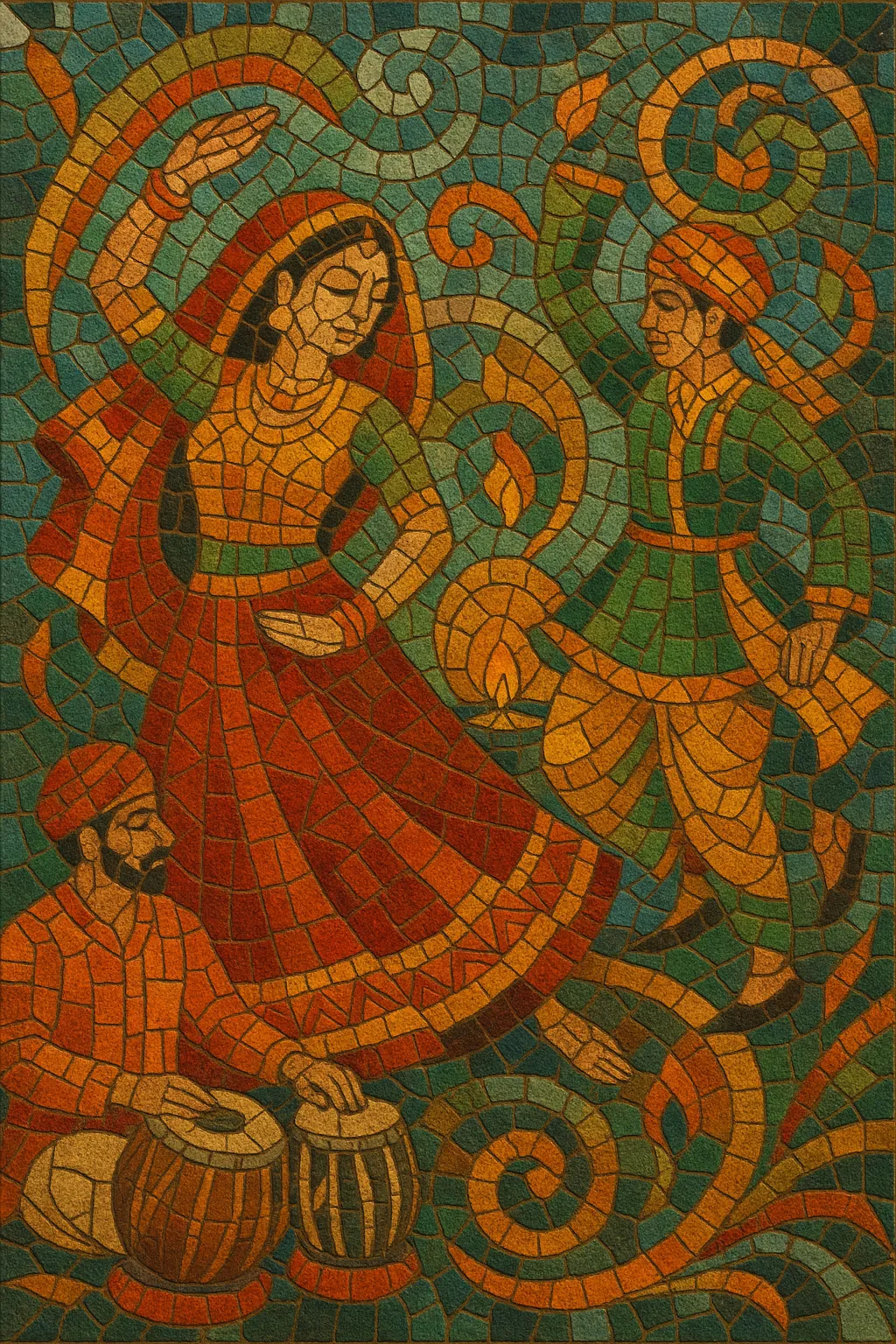Garba is a Gujarati folk music-and-dance tradition from western India, performed in circular formations around a diya (lamp) or an image of the Goddess during Navratri and other festive occasions. The music drives communal clapping patterns and twirling steps, emphasizing collective energy, devotion, and celebration.
Musically, garba typically uses lively 6-beat (dadra) or 8-beat (keherwa) cycles, repetitive call-and-response refrains, and modal melodies that sit comfortably in Hindustani-influenced scales. Traditional ensembles feature dhol, dholak, nagada, manjira (small cymbals), and harmonium; contemporary arrangements frequently add keyboards, electric bass, and drum kits, or even full pop production.
While often grouped with dandiya raas at Navratri events, garba is distinct: it relies primarily on claps (not sticks), rounded motion, and devotional/romantic Gujarati lyrics that build momentum over long, dance-focused performances.
Garba arose in Gujarat as a devotional folk practice centered on Shakti worship, with roots that predate the 19th century. Participants dance in circles around a lamp or icon symbolizing the Goddess’s energy. The circular motion, clapping, and refrain-based singing created a participatory ritual that blended village folk customs with Hindustani melodic sensibilities.
By the 1800s, garba’s musical contours—especially the reliance on 6-beat (dadra) and 8-beat (keherwa) cycles, call-and-response singing, and cyclic forms—had become widely recognizable. Traveling bards and local ensembles helped standardize text types (devotional praise, seasonal themes, and social romance) and instrumental setups (dhol/dholak, nagada, manjira, harmonium).
From the mid-20th century, radio, cassettes, and later television amplified garba beyond village courtyards. Large Navratri grounds in cities like Ahmedabad and Vadodara professionalized sound systems and bands. Signature voices and bandleaders emerged, crafting extended medleys and building arrangements that escalated tempo and density for dancers.
In the late 20th and 21st centuries, diaspora communities in the UK, North America, and beyond established massive Navratri nights. Producers folded pop, rock, and electronic textures into the garba palette, while film and Indian pop borrowed grooves and melodies for mainstream tracks. Despite modern production, the core circular dance, Gujarati lyrics, and devotional/celebratory ethos remain central.


